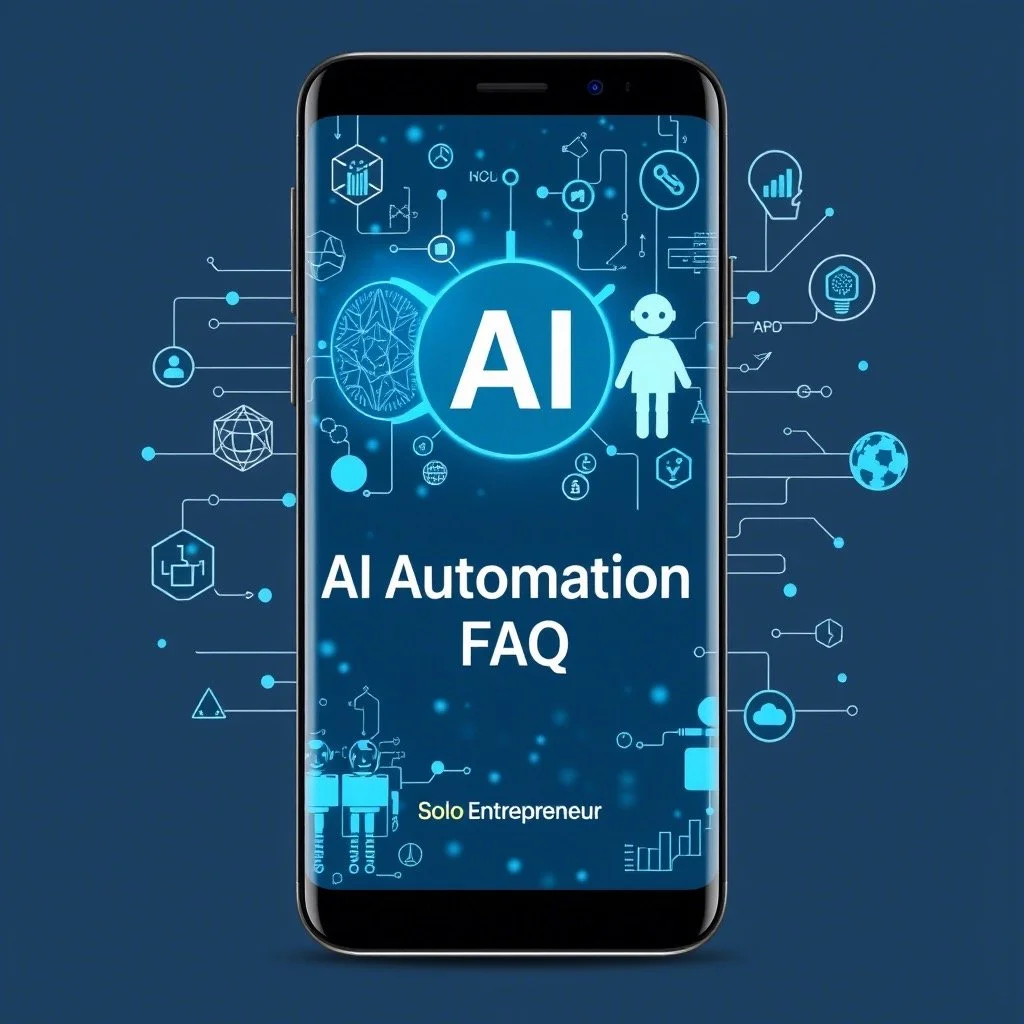Advanced Morel Mushroom Foraging
Advanced Morel Foraging in the Midwest: An Expert's Guide
TL;DR / Summary: This guide provides expert insights for serious morel hunters in the Midwest. Learn to identify true morels (Morchella spp.) vs. dangerous look-alikes, master advanced location strategies using tree associations (elm, ash, apple), soil temperatures (50-53°F), and mapping tools. Discover techniques for post-fire (burn site) foraging, ethical harvesting, and culinary uses of these prized fungi. The key message is that successful and safe morel hunting hinges on detailed ecological knowledge, precise identification, and responsible practices.
The Midwest's spring awakens a celebrated mycological treasure: the elusive morel mushroom (Morchella spp.). This guide offers an authoritative, in-depth exploration for dedicated foragers, moving beyond basics to cover advanced techniques for locating, safely identifying, and ethically harvesting these fungi, particularly in regions like Lower and West Michigan. Understanding morels, which function as vital saprophytes and potential mycorrhizal partners, is the first step to consistently successful forays.
The Midwest: Prime Ecoregion for Morel Mastery
The unique mosaic of the Midwest—hardwood forests, aging orchards, dynamic river systems, and diverse microclimates—creates an ideal terroir for several Morchella species. Success lies in deciphering these ecological invitations.
Critical Environmental Factors & Host Trees
Morels exhibit strong preferences for specific environmental conditions and tree associations.
- Key Tree Associations: Focus on:
- Dying or recently deceased elms (Ulmus spp.), especially those with bark largely intact.
- Mature ash trees (Fraxinus spp.); areas impacted by Emerald Ash Borer can be temporarily productive.
- Old apple orchards, particularly around the base of mature, gnarled trees.
- Poplar (Populus spp., including Cottonwood, Aspen), and Sycamore (Platanus occidentalis).
- Soil & Temperature Dynamics:
- They favor loamy, well-drained soils, often rich in calcium. A soil pH between 6.0 and 7.5 is often cited as ideal.
- Fruiting initiates when soil reaches 50-53°F (at 4-inch depth) and typically wanes as it exceeds 60-62°F. A probe thermometer is invaluable.
- The "70/50 rule" for air temperature (daytime highs near 70°F, nighttime lows above 50°F) is a reliable indicator.
- Moisture & Forest Disturbance:
- Adequate soil moisture from spring rains or snowmelt is critical, but avoid waterlogged areas.
- Minor disturbances like historic logging areas or floodplains can sometimes stimulate fruiting.
Seasonal Progression & Slope Strategy
- Southern Midwest (e.g., Missouri, S. Indiana): Season often starts early to mid-April.
- Michigan & Northern Midwest: Expect morels from mid-to-late April, peaking in May. Hunt south-facing slopes early in the season (they warm faster), transitioning to north-facing slopes and denser cover as temperatures climb.
Common Midwest Morel Species Identification
- Yellow/White Morel (Morchella americana): Large, variable color, randomly oriented pits.
- Black Morel (Morchella elata complex): Appear earlier, darker ridges, often conical. Includes species like M. angusticeps.
- Half-Free Morel (Morchella punctipes): Cap attached midway up the stipe, creating a "skirt."
Advanced Foraging: Location Strategies & Techniques
Elevate your foraging game by integrating technology and keen field observation.
Mastering Maps & Digital Scouting for Morels
- Topographic Maps: Identify slope aspect, elevation, and drainage—key microclimate influencers.
- Satellite Imagery: Scout forest types, canopy density, and promising edges or clearings.
- Burn Area Maps (Post-Fire Foraging Expertise):
- Certain Morchella species (e.g., M. exuberans, M. tomentosa) are pyrophilous, fruiting prolifically 1-3 years after forest fires, especially in conifer or mixed forests.
- Consult U.S. Forest Service fire maps and apps like Gaia GPS or onX Hunt (with wildfire layers) to locate recent burns.
- Exercise extreme caution in burn zones due to hazards like standing dead trees.
- Public Land & Property Data: Always verify hunting legality. Use county plat maps or apps to delineate public (State Forests, Game Areas) vs. private land.
- GPS & Waypoint Management: Mark productive spots discreetly (to protect resources) and track routes for safety and pattern analysis.
Expert Field Techniques & Indicator Species
- Systematic Searching: Adopt a slow, methodical search. The "foveal Groucho Marx stoop"—focused, close-range scanning—is effective.
- Botanical Indicators: Synchronize your hunts with the phenology of certain spring plants:
- Dandelions seeding.
- Mayapples (Podophyllum peltatum) fully unfurled.
- Flowering Trilliums, Bloodroot, and Trout Lilies.
- Lilacs budding or just beginning to bloom.
Critical Morel Identification: True vs. Dangerous Look-Alikes
Safety First: Absolute 100% certainty in identification is non-negotiable before considering consumption.
Identifying True Morels (Morchella spp.)
- Cap: Distinctive honeycomb of pits and ridges; conical to ovate. Cap is directly attached, or in half-frees, midway up the stem.
- Stem & Interior: Completely hollow when sliced vertically; cap interior is also hollow and continuous with the stem.
Recognizing Dangerous False Morels
- False Morels (Gyromitra spp.):
- Cap: Brain-like, wrinkled, or lobed; often reddish-brown (e.g., G. esculenta).
- Stem & Interior: Not hollow; typically chambered or filled with cottony pith.
- Toxicity: Contain gyromitrin (can convert to monomethylhydrazine), a potentially DEADLY toxin.
- Early Morels/Verpas (Verpa bohemica, V. conica):
- Cap: Wrinkled, thimble-like, attached only at the very top of the stem.
- Stem & Interior: Often pith-filled, not truly hollow.
- Toxicity: Cause gastrointestinal distress in many; best avoided.
Ethical Harvesting & Morel Conservation Practices
Responsible foraging ensures future morel abundance.
- Use a Mesh Bag: Facilitates spore dispersal during your hunt.
- Cut, Don't Pull: Sever stems at the base, leaving the underground mycelium undisturbed.
- Harvest Selectively: Take only what you'll use. Leave young "pins" and overmature specimens. Avoid clearing entire patches.
- Tread Lightly: Minimize habitat disturbance.
- Know Local Foraging Regulations: Check with Michigan DNR or relevant local authorities for rules on public lands.
Real-World Applications: Morel Culinary Delights & Nutrition
Morels are culinary gold, offering a unique, deep, earthy flavor and meaty texture.
Preparing and Cooking Morels Safely
- Excellent sautéed in butter; in cream sauces for pasta or chicken; in omelets.
- Crucial: Always cook morels thoroughly. Raw or undercooked true morels can cause illness.
Morel Preservation Techniques
- Drying: Best method. Slice, then air dry or use a dehydrator on low. Rehydrate in water/broth (save the liquid!).
- Freezing: Sauté first for best results, then freeze.
Morel Nutritional Profile & Benefits
- Nutrient-Rich: Good source of protein, fiber, B vitamins (niacin, riboflavin), Vitamin D.
- Minerals: Provide iron, potassium, phosphorus, copper, selenium.
- Bioactive Compounds: Contain antioxidants and have shown potential immune-modulating effects in research.
Expert Recommendations for Midwest Morel Foragers
- Invest in Knowledge: Acquire reputable regional field guides. Join a local mycological society.
- Master Tree ID: Confidently identify key host trees in various life stages.
- Strategic Timing: Monitor environmental cues—soil/air temps, rainfall, indicator plants.
- Scout Intelligently: Utilize mapping tools to find promising public lands; assess slope, forest type, and disturbance history.
- Prioritize Safety: Forage with a companion; inform others of your plans; carry navigation aids; be 100% certain of ID.
- Champion Ethical Foraging: Be a steward of this natural resource.
Morel hunting is a deeply rewarding pursuit, blending ecological understanding with the thrill of discovery. Approach it with knowledge, respect, and an adventurous spirit.
Call to Action: Now that you're armed with expert knowledge, plan your ethical and informed morel foray. Share your finds and experiences responsibly within foraging communities!
Trust & Compliance Notes:
- AI Generation Disclosure: This article was generated with the assistance of an AI model. The information has been curated and refined based on established mycological knowledge.
- Disclaimer/Further Reading: This guide is for informational purposes only. Mushroom identification can be complex and errors can be fatal. Always consult multiple reputable field guides, local experts, or mycological societies before consuming any wild mushroom. Liability for consumption rests with the individual. For further expert information, consult resources from university extension offices, regional mycological societies, and texts like "Mushrooms Demystified" by David Arora or regionally specific field guides.
AI and Automation FAQ for Solo Entrepreneurs Mobile V2
AI Automation FAQ for Solo Entrepreneurs Mobile V1 — Navigate Challenges. Grow Stronger. ByteFlowAI - AI Solutions for Automation & Monetization Mobile Version 2
🧠 AI & Automation FAQ for Solo Entrepreneurs
Smart, Ethical, Budget-Friendly Tools for the “Flying Solo” Professional
❓ 1. I’m overwhelmed. Where can AI help me save the most time as a solopreneur?
✅ Answer: Start with repetitive tasks—think scheduling, email replies, social media posts, and document drafting.
🛠️ Tools to Try: Zapier, BeeDone
⚠️ Ethics Tip: Always review automated communications to ensure tone and accuracy match your brand voice.
❓ 2. What are some no-code AI tools that won’t break the bank?
✅ Answer: No-code tools help you work smarter without technical skills. They’re perfect for solopreneurs juggling everything.
🛠️ Tools to Try: Notion AI, Durable.co, Tidio
⚠️ Ethics Tip: Be transparent with clients when using AI chatbots—don’t impersonate human reps.
❓ 3. How can I use AI to boost communication and engagement?
✅ Answer: Use AI to personalize outreach, segment email lists, and reply faster on social media.
🛠️ Tools to Try: ChatGPT with custom instructions, MailerLite
⚠️ Ethics Tip: Avoid excessive automation that feels cold or spammy. Maintain human touch in key moments.
❓ 4. I don’t have a tech team. Can I still create AI-powered content?
✅ Answer: Absolutely! With the right tools, you can generate blogs, graphics, and social posts solo.
🛠️ Tools to Try: Canva Pro with Magic Write, Copy.ai
⚠️ Ethics Tip: Use disclaimers or subtle cues when AI assists in creation. Authenticity builds trust.
❓ 5. How do I avoid AI “overkill” and keep it ethical?
✅ Answer: Focus on augmentation, not replacement. Use AI to assist, not replace human judgment.
🛠️ Tools to Try: Ethical checklists (in Notion or Google Docs), transparent chatbot labels
⚠️ Ethics Tip: Respect user privacy. Don’t feed client data into AI tools unless you have consent and know how data is used.
❓ 6. What’s a good starter automation for my solo biz?
✅ Answer: Create a simple lead capture → email nurture → calendar booking flow.
🛠️ Tools to Try: Tally + Zapier + Google Calendar, Calendly + Notion + MailerLite
⚠️ Ethics Tip: Ensure all automations comply with data laws like GDPR or CAN-SPAM.
❓ 7. How can I future-proof my solo biz with ethical AI?
✅ Answer: Stay adaptable. Build lightweight systems using tools that evolve with new AI trends.
🛠️ Tools to Try: ChatGPT Pro, Framer AI
⚠️ Ethics Tip: Prioritize platforms with ethical AI commitments and clear data practices.
🎯 Final Thought:
You don’t need a team to scale smart. With the right AI tools, a clear ethical compass, and no-code systems, you can fly solo—but never feel alone. 🚀
Term: Bias in AI
What is Bias in AI? Understanding and Mitigating Unfairness in Artificial Intelligence
Now that we’ve explored AI alignment and its role in ensuring ethical AI behavior, it’s time to tackle one of the most pressing challenges in the field: bias in AI. Bias can creep into AI systems in subtle yet impactful ways, leading to unfair or discriminatory outcomes.
What is Bias in AI? Understanding and Mitigating Unfairness in Artificial Intelligence
Now that we’ve explored AI alignment and its role in ensuring ethical AI behavior, it’s time to tackle one of the most pressing challenges in the field: bias in AI. Bias can creep into AI systems in subtle yet impactful ways, leading to unfair or discriminatory outcomes.
What Exactly is Bias in AI?
Bias in AI refers to systematic errors or prejudices in AI outputs that result from skewed training data, flawed algorithms, or poorly designed prompts. These biases can lead to unfair or discriminatory outcomes, disproportionately affecting certain groups or individuals.
For example:
- An AI hiring tool might favor male candidates over female candidates if its training data primarily includes resumes from men.
- A facial recognition system might struggle to accurately identify people with darker skin tones if the training dataset lacks diversity.
Explain it to Me Like I’m Five (ELI5):
Imagine you’re playing a game where everyone gets a turn to roll a dice. But what if someone secretly changed the dice so it always landed on their favorite number? That wouldn’t be fair, right?
That’s what bias in AI is—it’s like a hidden rule that makes the AI favor some people or ideas over others, even when it shouldn’t.
The Technical Side: How Does Bias Creep Into AI Systems?
Let’s take a closer look at the technical details behind bias in AI. Understanding these sources is the first step toward addressing and mitigating them:
- Skewed Training Data: If the data used to train an AI system is unrepresentative or biased, the AI will learn and replicate those biases. For example:
- A healthcare AI trained on data from predominantly male patients may fail to provide accurate diagnoses for women.
- Flawed Algorithms: Even with good data, the algorithms used to process it can introduce bias. For instance:
- An algorithm might prioritize certain features (e.g., income level) over others, leading to unequal treatment.
- Poorly Designed Prompts: The way prompts are crafted can influence AI outputs. For example:
- A vague or ambiguous prompt might lead the AI to make assumptions based on stereotypes.
- Lack of Diversity in Development Teams: If the team designing and testing the AI lacks diversity, they may overlook biases that affect underrepresented groups.
Why Does Bias in AI Matter?
- Unfair Outcomes: Bias can lead to discrimination in areas like hiring, lending, law enforcement, and healthcare, harming individuals and communities.
- Erosion of Trust: Users are less likely to trust AI systems that produce biased or unfair results, hindering adoption and acceptance.
- Legal and Reputational Risks: Organizations deploying biased AI systems face potential legal consequences and reputational damage.
- Societal Impact: Bias in AI can perpetuate and amplify existing inequalities, worsening social divides.
How Bias in AI Impacts Real-World Applications
Understanding bias in AI isn’t just for researchers—it directly impacts how effectively and responsibly AI systems are deployed in real-world scenarios. Here are some common challenges and tips to address them.
Common Challenges:
| Challenge | Example |
|---|---|
| Skewed Training Data: | An AI hiring tool favors male candidates because its training data was skewed toward men. |
| Flawed Algorithms: | A credit scoring AI unfairly penalizes low-income applicants due to biased feature selection. |
| Ambiguous Prompts: | A chatbot generates harmful content due to unclear instructions in its prompt. |
| Lack of Testing for Bias: | An AI system is deployed without being tested for fairness, leading to discriminatory outcomes. |
Pro Tips for Mitigating Bias in AI:
- Audit Regularly: Conduct regular audits of AI outputs to identify and address biases. Use tools like fairness metrics to measure performance across different groups.
- Diversify Training Data: Ensure training datasets are diverse, balanced, and reflective of real-world populations. Include underrepresented groups to reduce bias.
- Involve Diverse Teams: Include diverse perspectives in the design, development, and testing process to identify potential biases early.
- Use Explainable AI Techniques: Leverage tools and methods that make AI decision-making processes transparent, helping to identify and correct biases.
- Iterate and Refine: Continuously refine the AI system based on feedback and real-world performance. Address emerging biases as they arise.
Real-Life Example: How Bias in AI Works in Practice
Problematic Approach (Biased AI):
The AI struggles to accurately identify people with darker skin tones because its training dataset primarily includes images of lighter-skinned individuals.
Result: The system disproportionately misidentifies individuals with darker skin tones, leading to false accusations and mistrust.
Optimized Approach (Mitigated Bias):
The AI is trained on a diverse dataset that includes equal representation of all skin tones. Additionally, fairness metrics are used to evaluate performance across demographic groups. For example:
- “Ensure accuracy rates are consistent across all skin tones.”
- “Test the system with edge cases, such as low-light conditions or obscured faces.”
Related Concepts You Should Know
If you’re diving deeper into AI and prompt engineering, here are a few related terms that will enhance your understanding of bias in AI:
- Fairness: Ensuring AI systems treat all users equitably, without discrimination based on irrelevant factors.
- Ethics in AI: The study of moral principles and values that guide the development and use of AI systems.
- Bias Mitigation: Techniques for identifying and reducing biases in AI models and datasets.
- Interpretability: The ability to understand and explain how an AI system makes decisions, making it easier to detect and address biases.
Wrapping Up: Mastering Bias Mitigation for Fairer AI Systems
Bias in AI is not just a technical issue—it’s a societal challenge that requires attention, effort, and collaboration. By identifying and addressing biases in training data, algorithms, and prompts, we can build AI systems that are fair, inclusive, and trustworthy.
Remember: mitigating bias is an ongoing process. Regularly audit your AI systems, involve diverse stakeholders, and stay informed about best practices for fairness and ethics. Together, we can create a future where AI benefits everyone equally.
Ready to Dive Deeper?
If you found this guide helpful, check out our glossary of AI terms or explore additional resources to expand your knowledge of bias mitigation and ethical AI development. Let’s work together to build a fairer and more equitable AI ecosystem!



